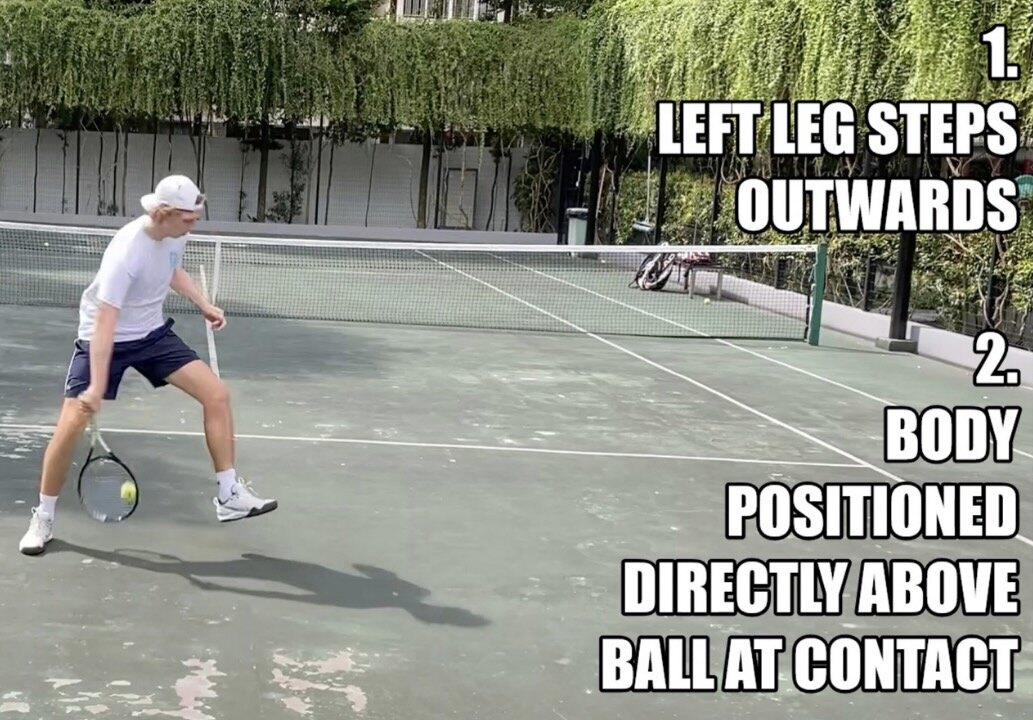How to Hit a Tweener
The tweener is one of the most spectacular shots in the game of tennis. It involves hitting the ball through your legs while running towards the baseline, with your back facing the net and opponent. Enjoyed by the player, adored by the crowd, the tweener is one of the most satisfying shots to hit and watch, always making it into the match highlights.
If you are tired of just watching tweeners rather than hitting tweeners, this is the article for you. It provides information on how and why the tweener is used as well as how you can practice it on your own.
The tweener is a rather advanced shot which beginners are likely to struggle with. But heads up! Anything is possible if you only practice it enough.
Origin
Historically, the tweener was invented by Argentine Guillermo Vilas who had been inspired by a polo advertisement where a player from the 1970s hit the ball back through the legs of his horse. In tennis, the tweener is now used when a player is at the net but gets lobbed by their opponent. In this scenario, the player has to run back while trying to reach the ball. In some cases, they will have enough time to move around the ball to hit a normal forehand or backhand while in other cases this will not be the case. That is when the tweener is used. It is very suitable for such occasions as the fact that you can hit the ball while running backward as well as the low contact point provide the player more time to reach the ball.
Grip
The grip is a very important aspect of the tweener. While there is some variation due to personal preference, the most commonly used grip is the continental grip, which is the same one you use for your serve and volleys. It is the most suitable as it enables the player to flick the wrist just before contact to add more power to the shot. Furthermore, it allows for the racket face to flatten out just before contact allowing the player to strike the ball cleanly.
Contact Point
The contact point is just as unique as it is difficult to master. This is because the ball must be hit just before it bounces for the second time. This means the player needs to practice letting the ball drop below their knee level or else the angle will not allow the shot to cross the net. This might seem very unnatural at first and certainly takes time to get used to. The second aspect of the content point is how you position your body in relation to the ball. The answer is simple: At the point of contact, the ball must be directly between the player’s legs with the upper body positioned right above it.
Footwork
The footwork is also of special significance. For the tweener, right-handed players must use their left leg to step outwards moments before they make contact with the ball. To create even greater space between their legs it is recommended to slightly rotate the hips to the left at the same time.
Swing
Additionally, the swing must be considered as well. Similar to the serve, the racket undergoes an up to down motion. You can start the swing by holding your racket arm at around 90 degrees from your body, in front of you. With a solid racket acceleration, this will certainly provide enough power to get the ball up and over the net. The swing through the legs is to be handled with special care as it could lead to serious pain – especially for the male players out there :). After practicing you should, however, try to reach through your legs as far as possible to generate more power on the ball.
How to Practice
And if that feels like a lot to remember, here are 3 easy steps on how to practice it.
1. Toss the ball with your non-racket hand so that it bounces by the side of your body and practice the up to downswing by your side
2. Once you have mastered that, you can start by tossing the ball further forward forcing you to conduct the same motion while running
3. Once you are comfortable with that, you can then practice the same with the swing through your legs rather than by your side
If you are still a little unsure, feel free to watch the video again – but keep in mind that the tweener is a difficult shot that requires a lot of practice. Simply knowing the theory won’t be enough to impress your friends with an amazing tweener. Get out on court, practice, and most importantly - have fun!



"The Philosophical Tennis Player: Thinking Your Way To Winning" offers a unique perspective on the sport of tennis. This book provides guidance inspired by philosophy to help you rethink the game and reach your peak performance. The author breathes life into abstract philosophical concepts, transforming them into tangible strategies everyone can use to become a successful player. Readers will gain insight into the psychological aspects of tennis and recognise the timeless values that extend beyond the confines of the court.
About The Author
Darren Teo is the founder of Play! Tennis, the most Google reviewed tennis academy in Singapore. His passion for making tennis accessible to everyone regardless of their age, experience and ability continues to drive his work at the school. He is a thought leader in LinkedIn with 14,000 followers.